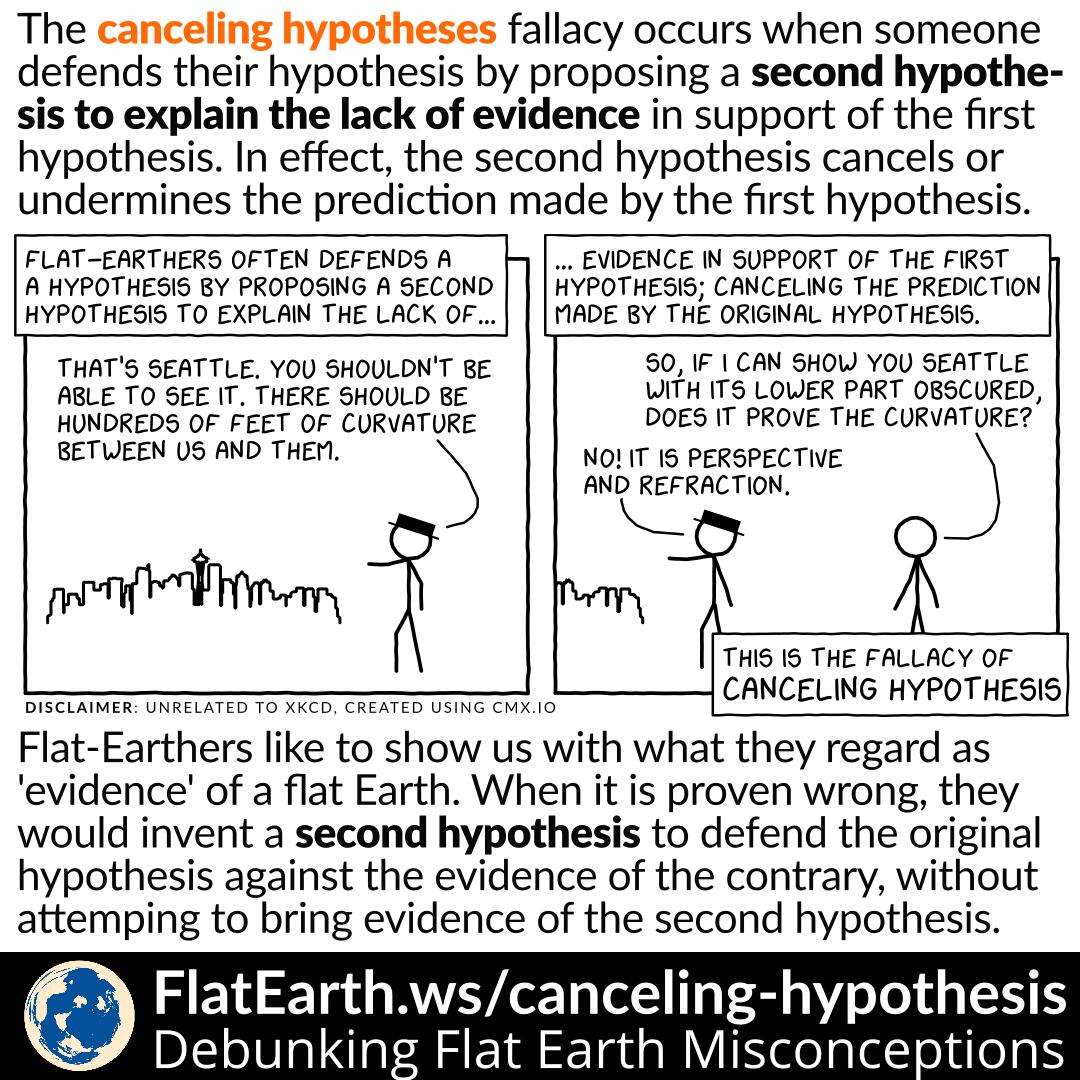The canceling hypotheses fallacy occurs when someone defends their hypothesis by proposing a second hypothesis to explain the lack of evidence in support of the first hypothesis. In effect, the second hypothesis cancels or undermines the prediction made by the first hypothesis.
Flat-Earthers like to demonstrate what they regard as ‘evidence’ of a flat Earth. However, when it is demonstrated that the evidence is wrong, they would invent a second hypothesis to defend the original hypothesis against the evidence of the contrary. They do it without attempting to bring sufficient proof of the second hypothesis.
As an example, when a distant building is fully visible, flat Earthers will be happy to proclaim it as evidence of a flat Earth. However, in other cases where only the top of the same building is visible, they will not take it as evidence against a flat Earth. Instead, they would invent an ‘explanation’ that it is caused by ‘refraction’ and ‘perspective’ to defend their original hypothesis. In effect, they are implicitly conceding the visibility of a distant object cannot be regarded as evidence of a flat Earth.
A special form of this fallacy is ‘conspiracy theory’. If the Earth is flat, there should be no pictures and videos of spherical Earth taken from space. But because there are such pictures, they would invent the “explanation” that those who gave us the pictures are lying. It is not possible to believe in a flat Earth without accusing so many people of lying.
References
- Canceling Hypotheses – Bruce Thompson
- Conspiracy Theory – Logically Fallacious


